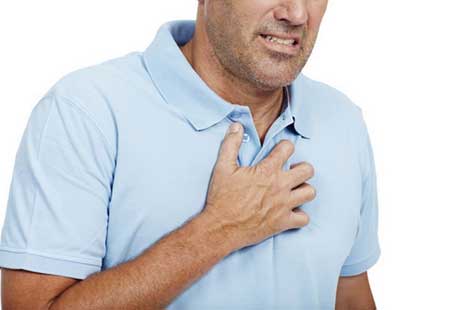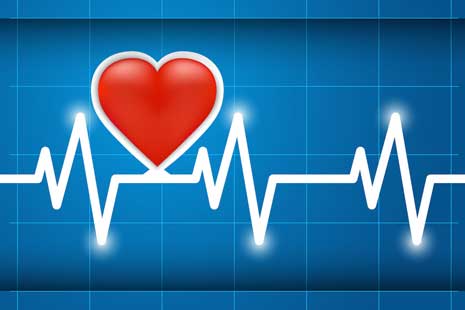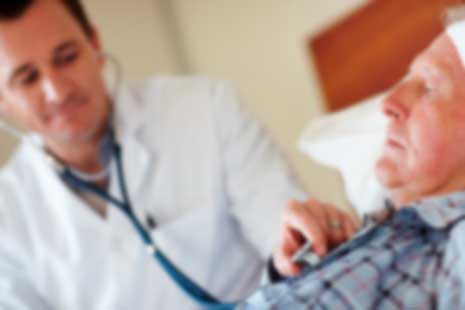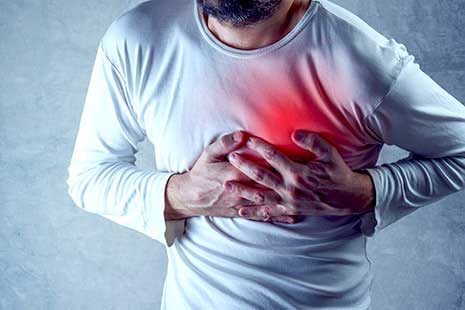EECP
EECP or Enhanced External Counter Pulsation, EECP is Non-Invasive, simple, safe, and cost effective treatment without surgery or hospital stay. Patient can take this treatment without disturbing his / her daily routine life.
Approved by FDA
EECP is internationally recognized by FDA (USA), CE Mark (Europe) etc. EECP is mentioned in medical textbooks. Many articles have been published in the journal of the American College of Cardiology, Cardiovascular Reviews Reports, Cardiology, Mayo Clinical Proc., Clinical Cardiology, Journal of External Counter Pulsation, etc.
Indications for EECP

Angina (Chest Pain) on maximal medical therapy &

Patients, who do not want to undergo Bypass surgery or angioplasty,

Patients in whom Angioplasty or By-pass surgery is risky.

Failed angioplasty or By-pass Surgery Patients with low heart function
EECP Treatment
During the treatment, blood pressure cuffs are wrapped around the legs; it is squeezed and released in sync with the heartbeat promoting blood flow throughout the body, particularly to the heart.
In the process, EECP develops new pathways around blocked arteries in the heart by expanding networks of tiny blood vessels (“collaterals”) that help increase and normalize blood flow to the heart muscle. Hence it is often termed “NATURAL BYPASS”.
EECP increases blood flow
To heart by 20-42%
To brain by 22-26%
To kidneys by 19%

Treatment Regimen
The standard course of treatment is one hour per day, 5 days per week, for 7 weeks (a) total of 35 one-hour sessions). Some patients schedule 2 sessions in 1 day in order to complete the program quickly. Some may extend the program beyond 35 sessions, depending on their particular medical conditions and goals
Frequently Asked Questions
EECP is safe. Occasionally, some patients experience mild skin irritation under the areas of the blood pressure cuffs. Experienced EECP therapists address this irritation by using extra padding to make the patient comfortable. Some patients experience fatigue initially which usually subsides after the first few sessions; in fact, patients typically feel energized after the EECP therapy.
Upto 90% of the patients show drastic improvement. Most of them feel better within 15 to 20 hours of treatment. The benefits of EECP last for 3 to 7 years or even more. EECP is so successful, that in USA insurance reimbursement for EECP has gone up by 6% whereas that for other procedures like angioplasty, bypass surgery etc, has decreased by 5%
- Patient can walk more distance without chest pain
- Patient would have fewer or no angina.
- Episodes of angina would be less painful
- Patient can return to work and can participate in their active life style once again
- Patient would be more energetic and confident.
EECP is a safe, outpatient, non-invasive treatment. So you don’t have to restrict any of your daily routine work. You can fix your one-hour time treatment schedule according to your convenience. Before you start the treatment you will be asked to wear tight fitting elastic pant. This is to prevent skin irritation and abrasion.
EECP feels like a deep muscle massage to your legs. During the treatment you might not feel anything in the chest or heart. You will only feel the cuffs that are wrapped around your legs squeezing in time to your own heartbeat. Our patients have affectionately described this sensation as a “gentle hug”. Most of our patients relax, listen to music, or read during their treatments. Some even sleep!
You are encouraged to come for your EECP treatment every day. However, missing a day will not have a negative effect on your overall results. When you come back, you will simply pick up where you left off, and the missed treatment will be added to the end of your program until you have complete a minimum of 35 sessions. Just like exercise, the more consistent you are with your EECP schedule, the better your results will be.
Angina is the global term for all symptoms associated with coronary artery disease, which occurs when the heart is not receiving enough blood OR the blood carrying capacity to the heart muscle become dysfunctional leading to narrowed or blocked vessel.
Angina may feel like chest pain or pressure, shortness of breath, pain in the jaw, neck, arms, back, nausea, or generalized fatigue. Each patient experiences angina differently.
Formation of network of tiny blood vessels, which make it possible for blood to detour around blocked or narrow arteries, is called collateral circulation. However the development of collateral circulation is a gradual process and not everyone has the same ability to develop these networks at the rate that will relieve angina. EECP treatment triggers and accelerates this collateral circulation and makes it permanent.
Yes, In patients followed for 3 to 5 years after treatment, the benefits of EECP, includes less angina, less nitroglycerin usage, and improved blood flow patterns documented on stress tests, had lasted.
The 5 year outcomes for EECP patients are virtually the same as for angioplasty and bypass surgery patients.
All these current mode of treatments helps the heart by increasing the blood flow to the area of the heart muscle that is not receiving adequate blood supply. Once the blood supply is increased towards normal the patient’s chest pain will be decreased or eliminated and his exercise tolerance will improve.
During EECP hearts natural mechanism of forming new vessel is enhanced which markedly increase the blood supply to the heart muscle. EECP also tends to improve your endothelial cell function that lines your coronary arteries, which determine your chance of getting heart attacks. EECP decrease your heart rate and other Neurohormones, which damage the heart muscles.
Yes. Varicose veins are typically a cosmetic issue, not a medical one. As such, they do not preclude individuals from receiving EECP. We often use extra padding in patients with varicose veins to ensure maximum comfort.
Yes. EECP is not a once in a lifetime treatment. Heart disease is a chronic illness and symptoms may return at some point in the future. The door is always open for you to return for additional courses of EECP as needed..
Leading technology for treating cardiovascular disease is slowly moving from very invasive methods to less invasive ones. Medical history is witness that in the seventies bypass surgery was the big news in the treatment of coronary artery disease. In the eighties it was balloon angioplasty and in the nineties it was the stent now we can move still a step further to a totally noninvasive treatment with EECP. The Future belongs to those who succeed and EECP has now been proved worldwide by leading hospitals. The success of EECP can be judged by the fact that in the US Medicare reimbursement rate for EECP has increased by 7% whereas that for other procedures like angioplasty and bypass surgery decreased by 6%
Some patients want to visualize the post EECP treatment improvement when compared with their previous reports. They can repeat their Exercise treadmill test or Echo cardiographs or Nuclear scan after the treatment. Some physician might feel follow-up test is unnecessary since the patient symptomatic clinical improvement itself has demonstrated increase blood flow to the heart muscle.
EECP is a safe, out patient, non-invasive treatment. So you don’t have to restrict any of your daily routine work. You can fix your one-hour time treatment schedule according to your convenience. Before you start they treatment you will be asked to wear tight fitting elastic pant. This is to prevent skin irritation and abrasion.
No, Pacemakers and internal defibrillators do not interfere in any way with EECP.
No. Patients on Coumarin are able to undergo EECP treatments safely.
No. In fact, in July 2002 the FDA approved EECP as a treatment for congestive heart failure (CHF). After completion a course of EECP treatment, patients with CHF typically had less swelling in their legs, less shortness of breath, less fatigue, and often required less diuretic medication.
No. We have successfully treated patients as young as 36 and as old as 97 without any difficulties. Many of our patients are in their 80s and complete the entire EECP program with excellent results.
Yes! Most of our patients have already had one (or many) of these procedures. They come for EECP treatment because they still have angina.
No. Our bodies follow the laws of physics, and one principle law is that fluid will travel in the path of least resistance. Atherosclerotic plaques are calcified and hard, and they create an obstruction that detours the blood through alternate routes. During EECP®, when your blood is flowing to the heart, it will naturally bypass arteries with plaque and enter healthy, non-diseased blood vessels to go around blockages. Throughout the EECP® cycle, these new pathways are reinforced and become lasting routes for blood to reach your heart muscle beyond blockages. Almost every EECP® patient has multiple blockages; no one has ever had a heart attack or a stroke as a result of the treatment.
There are very few patients who cannot have EECP®. The individuals who should not be treated include pregnant women, those with a severe aneurysm (thinned & bulging vessel walls) in their aorta requiring surgical repair, and patients with active blood clots in their legs.
Yes. Having a history of a blood clot (deep venous thrombosis or DVT) in your leg does not preclude you from having EECP. It is recommended that you have Doppler ultrasound of your leg to confirm the blood clot has resolved before beginning the EECP program.
No. If you have hypertension that is properly managed, you may undergo EECP without difficulty. Oftentimes, patients with hypertension find that their blood pressure improves as they proceed with EECP. If your hypertension is uncontrolled, you must seek medical care to get your blood pressure under control with proper medications before proceeding with EECP.
Yes, and you should! EECP improves blood flow throughout the entire body, including your legs. If you have poor leg circulation, you might need more than 35 treatments. My patients typically require at least 50 treatments to get the full benefit of the program. In addition to improved stamina, less angina, and less nitroglycerin use;s patients with PVD have a marked improvement in their leg circulation in response to EECP.
Yes, An irregular heartbeat, including one caused by atrial fibrillation, will not interfere with EECP if the heart rate is controlled and no faster than 100 beats per minute.

